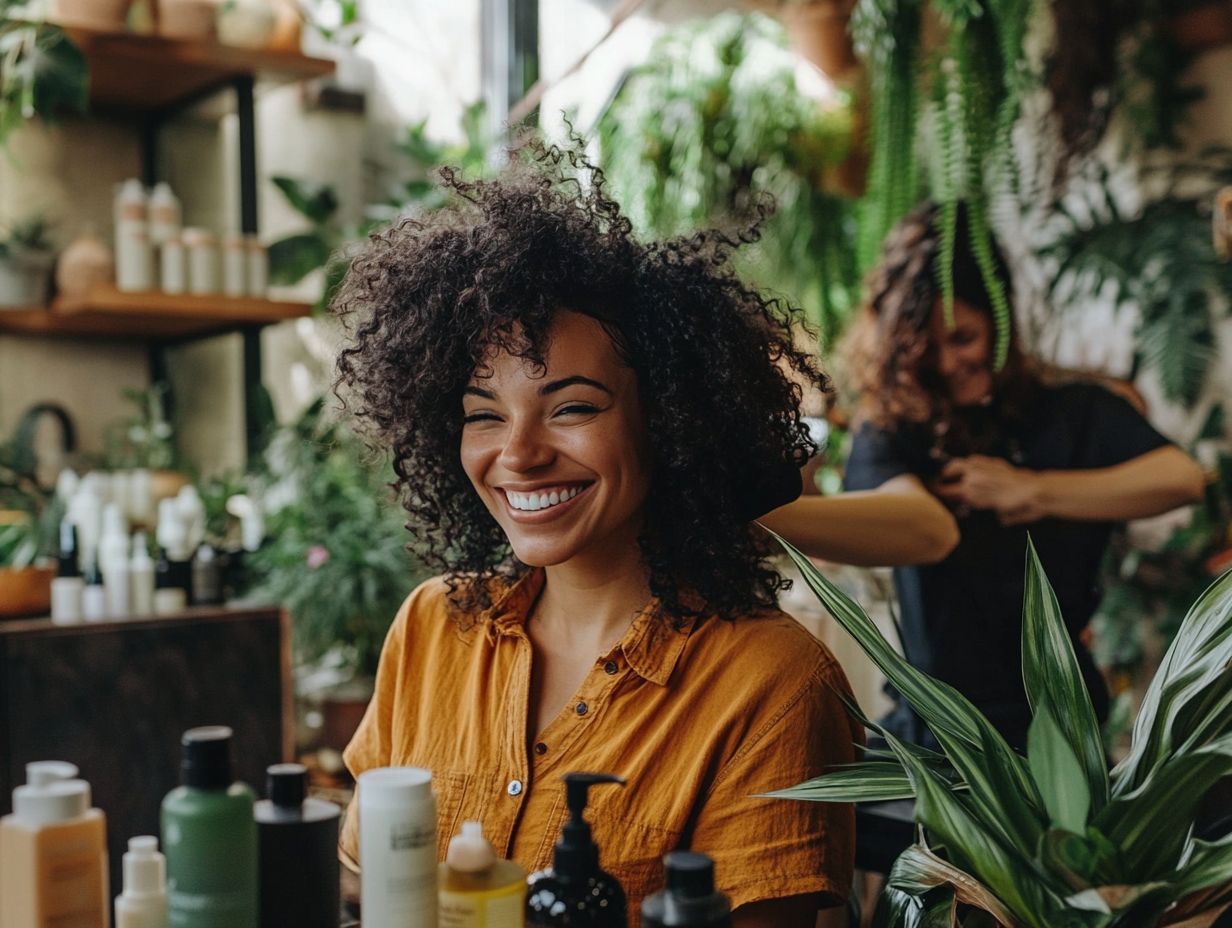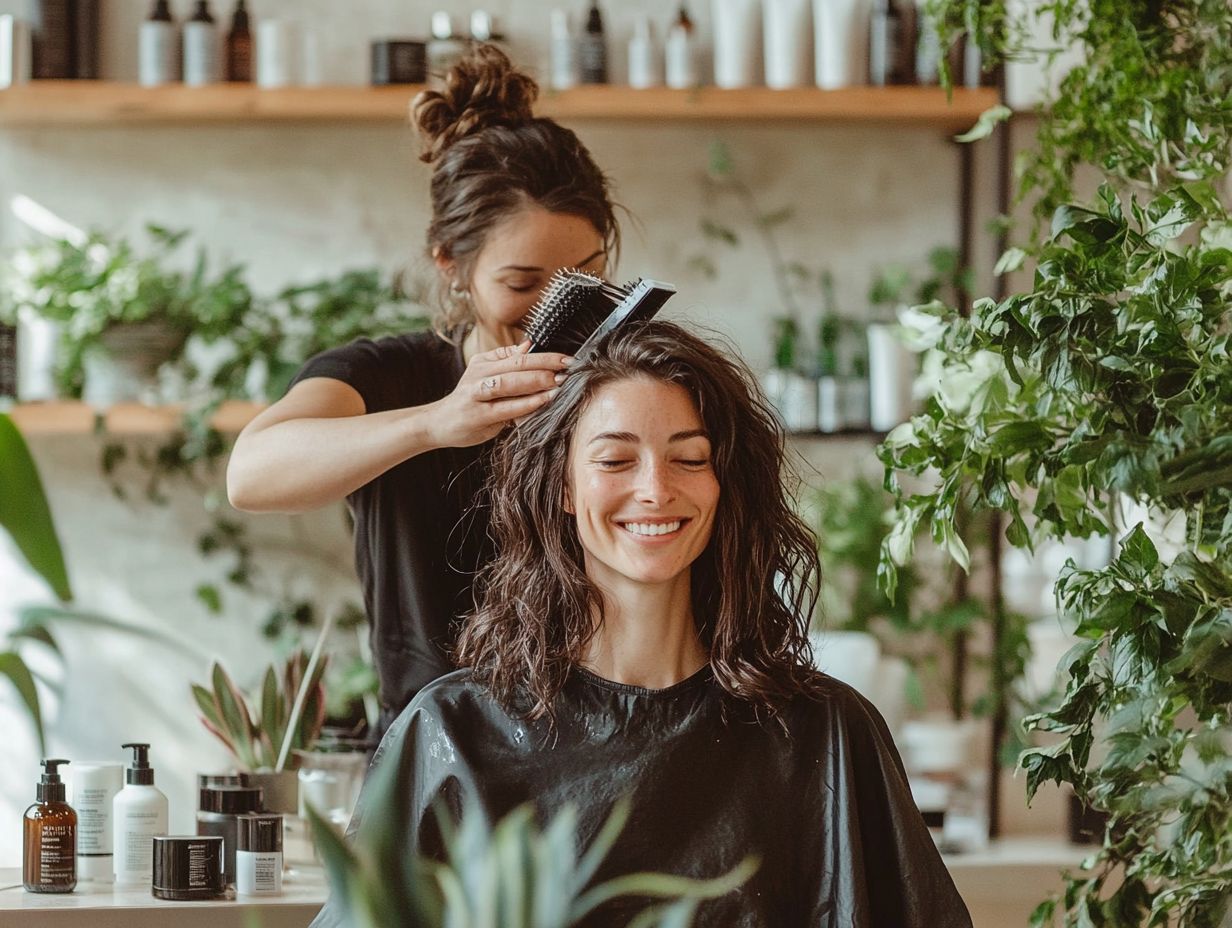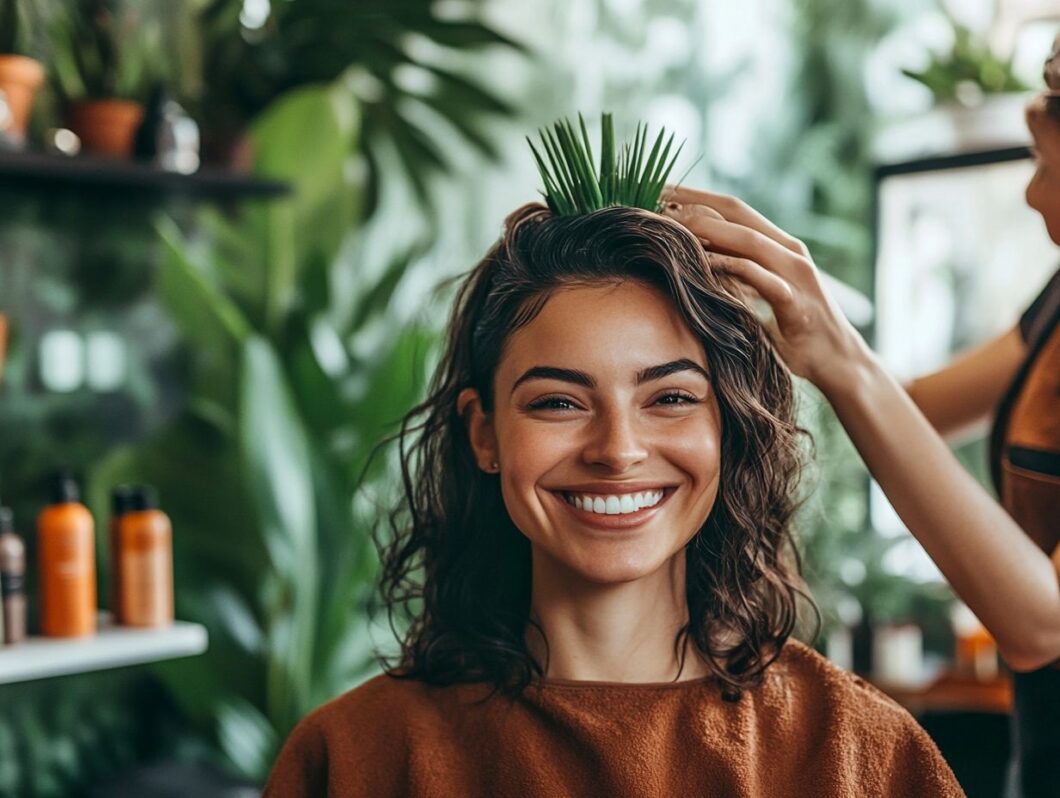I am considering a change in my hair color, and switching to organic hair dye might be the ideal solution for me. Traditional hair dyes often contain harsh chemicals that can damage hair and irritate the skin, which is a significant concern.
I am exploring the numerous benefits of organic hair color, understanding what sets it apart, and gathering essential tips for a smooth transition. From selecting the right product to caring for my hair after application, I will find guidance at every step. Embracing healthier hair and vibrant color is a goal I am ready to pursue with confidence.
Key Takeaways:
The Benefits of Switching to Organic Hair Color

Switching to organic hair color presents numerous benefits, especially for those of us who prioritize natural ingredients and sustainable practices in our hair care routines. As I become more aware of the potential harmful effects associated with traditional hair dyes, choosing organic solutions offers a safer alternative that aligns with my health-conscious lifestyle.
Organic hair color is formulated with plant-based components, which reduces exposure to chemicals that may compromise hair health or contribute to issues such as hair breakage. With reputable options like Tints of Nature and Davines, I can embark on my coloring journey and achieve beautiful, vibrant results while ensuring the integrity of my hair remains intact.
Why Traditional Hair Dyes Can Be Harmful
I have observed that traditional hair dyes often contain harsh chemicals like ammonia and peroxide, which can lead to significant hair breakage and damage. This makes them a less desirable choice for anyone concerned about hair health.
Beyond merely impacting the strength of hair, these substances can also contribute to more serious health concerns, including skin irritations and allergic reactions. Prolonged exposure to these chemicals may not only compromise hair texture, making it dry and brittle, but can also raise health risks such as respiratory issues when inhaled.
As awareness of these risks grows, many individuals, including myself, are turning to organic alternatives that provide a gentler approach to hair coloring. These plant-based dyes, free from harmful additives, present a safer solution for those looking to enhance their appearance without compromising their overall well-being.
Understanding Organic Hair Color
Understanding organic hair color is essential for anyone who wishes to make informed decisions about their hair care and coloring journey.
Organic hair color refers to products that are formulated with natural ingredients and are free from harmful chemicals commonly found in conventional hair dyes. Brands such as Olaplex and Rahua prioritize the health of hair while providing vibrant, long-lasting color.
By familiarizing myself with the formulation and benefits of organic options, I can make choices that align with my values regarding sustainable beauty and natural color.
What Makes Hair Color Organic?

I understand that hair color is considered organic when it is made from natural ingredients such as chamomile, coffee, beet juice, and henna, all of which are free from synthetic additives and harsh chemicals. For more information, check out this article on making the switch to organic hair color.
These natural components not only deliver vibrant colors but also nourish the hair, enhancing its overall health and shine. For instance, ingredients like aloe vera can effectively moisturize the scalp, while essential oils often included in these formulations help stimulate hair growth and improve texture.
Certification processes are essential for validating a product as organic, as they ensure compliance with strict agricultural standards and consumer safety guidelines. Brands that receive certification typically showcase this on their packaging, which fosters trust through transparency regarding ingredient sourcing.
“`html
This clarity gives the power to consumers to make informed choices about products that positively impact their beauty routines and personal health. For more information, check out How to Make the Switch to Organic Hair Color.
“`
How to Choose the Right Organic Hair Color
Selecting the appropriate organic hair color plays a crucial role in my overall hair health and satisfaction with the results. It is essential for me to consider various factors, such as my hair texture, the desired color, and maintenance tips before making a decision.
I carefully assess my specific hair goals, whether it’s achieving vibrant blonde hair, subtle highlights, or lowlights, while also evaluating which organic ingredients work best with my unique hair texture.
By understanding these elements, I can choose a color treatment that not only enhances my appearance but also nourishes my natural hair.
Factors to Consider
When selecting organic hair color, I take several factors into account, including my hair texture, the desired color, and the maintenance necessary to keep my new look vibrant and healthy.
I understand that my unique hair texture can significantly influence the final outcome of the color. For example, finer hair tends to absorb color differently than coarser strands, which can affect both the intensity and longevity of the shade.
It’s also important for me to identify the desired hue—whether I’m aiming for subtle highlights or a complete transformation—and how that choice aligns with my natural undertones. Maintenance is another critical consideration; organic dyes often require specific care routines to prevent fading and damage.
I find that consulting with a professional colorist provides tailored recommendations based on these factors, ensuring I achieve the desired results while maintaining the health of my hair.
Preparing for the Switch

Preparing for the transition to organic hair color requires careful consideration of my current hair care routine, as well as a thorough understanding of the processes involved to ensure a successful transition and optimal hair health.
By assessing the condition of my hair, identifying any existing damage, and implementing effective maintenance strategies, I can better equip myself for the new coloring journey ahead.
I believe it is essential to adopt a holistic approach to hair care, incorporating nourishing products from reputable brands such as Leonor Greyl and Christophe Robin, which prioritize enhancing hair health and supporting the coloring process. For more insights, check out How to Make the Switch to Organic Hair Color.
Steps to Prepare Your Hair
To prepare my hair for the application of organic color, I follow essential steps that promote hair health, ensuring that my strands are strong and ready for the coloring process.
I start by assessing the current condition of my hair; if it shows signs of dryness or damage, I incorporate a deep conditioning treatment for at least one week prior to coloring. I also use organic oils, such as argan or jojoba, to nourish and hydrate my hair. A gentle, sulfate-free shampoo helps maintain moisture without stripping away essential oils.
It’s equally important for me to avoid heat styling tools leading up to the application, as they can weaken the hair fibers. By adhering to these routines, I can enhance the vibrancy and longevity of the finished color, ensuring a radiant and healthier appearance post-application.
Application Techniques for Organic Hair Color
Application techniques for organic hair color are essential in achieving the desired results and ensuring that the color treatment is absorbed effectively, leading to vibrant and long-lasting outcomes.
Understanding the various methods, whether I am using box dye at home or sitting in a salon chair with a skilled colorist, can significantly impact the final look.
Techniques such as balayage or traditional coloring necessitate precise application to accommodate different hair textures and desired effects. Therefore, having a solid understanding of the application process is crucial for anyone embarking on their coloring journey.
Tips for Achieving Desired Results

To achieve the desired results with organic hair color, it is essential for me to follow specific tips that enhance the effectiveness of the application and promote hair care throughout the coloring process.
I understand the importance of adhering to the instructions provided by the manufacturer, as each formula may have unique requirements that contribute to optimal results. I also make sure to conduct a patch test beforehand to avoid any adverse reactions.
Once the coloring process is complete, maintaining the health of my hair becomes crucial. I opt for sulfate-free shampoos and conditioners, which not only nourish my hair but also protect the integrity of the color.
Incorporating color-safe treatments further assists in keeping the hues vibrant while minimizing fading, ensuring a beautiful and long-lasting hair transformation.
Caring for Your Hair After Switching to Organic Color
Caring for my hair after transitioning to organic color is essential for maintaining both the vibrancy of the color and the overall health of my hair.
I have adopted a consistent hair care routine that includes using specific products designed for color-treated hair, which significantly extends the life of my new shade while keeping my strands healthy and nourished.
By following professional recommendations and maintenance tips, I can achieve beautiful results without jeopardizing the integrity of my hair.
How to Maintain Color and Health of Hair
To maintain the color and health of my hair after transitioning to organic color, I find it essential to adopt proactive hair care strategies and choose the right products specifically designed for color-treated hair. This approach not only preserves the vibrancy of the hue but also ensures that my strands remain healthy and nourished.
For instance, I incorporate sulfate-free shampoos and conditioners that are specifically formulated for colored hair, which helps lock in moisture while preventing fading. Establishing a weekly deep conditioning regimen has proven effective in revitalizing my hair and reducing its susceptibility to breakage.
Additionally, I make it a point to limit heat styling and, when necessary, I always use a heat protectant spray. I also prioritize seeking out products that are rich in natural oils and antioxidants, as these are crucial for maintaining the integrity of organic color and enhancing its longevity.
Possible Side Effects and How to Handle Them
While I appreciate that organic hair color is generally gentler on the hair and scalp compared to traditional dyes, I recognize the importance of being aware of potential side effects that may occur during or after application.
Even though organic ingredients are considered safer, some individuals may still experience allergic reactions or sensitivities to certain natural components. This highlights the necessity of performing a patch test before fully committing to a new color treatment.
By understanding these potential side effects, I can effectively manage them without compromising the health of my hair.
Dealing with Allergic Reactions and Other Issues
Dealing with allergic reactions to organic hair color requires my immediate attention and a clear understanding of the symptoms, which can vary from mild irritation to more severe responses.
In such situations, I prioritize stopping the use of the product immediately to prevent any further complications. If I experience any signs of an allergic reaction, I consider over-the-counter treatments, such as antihistamines or topical corticosteroids, to help alleviate discomfort. Consulting a healthcare professional for personalized advice based on the severity of the reaction is essential.
During the recovery period, I focus on maintaining the health of my hair; gentle washes and nourishing conditioners are key to restoring vitality.
When exploring alternative hair color solutions, I look for products that are free from known allergens or consider using semi-permanent dyes with natural ingredients, as they may be more suitable for my needs.


